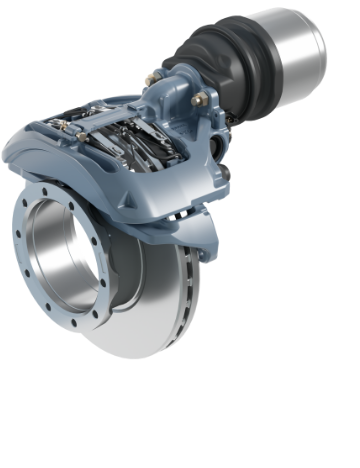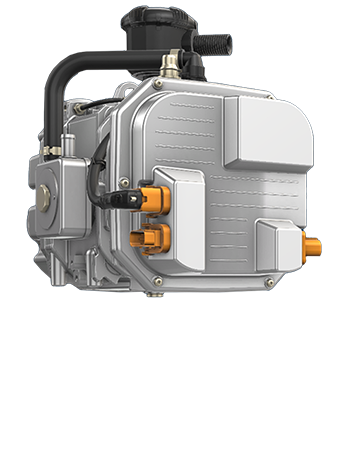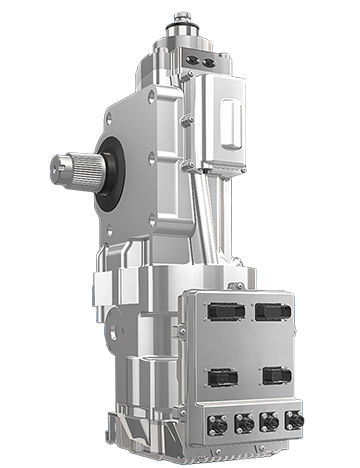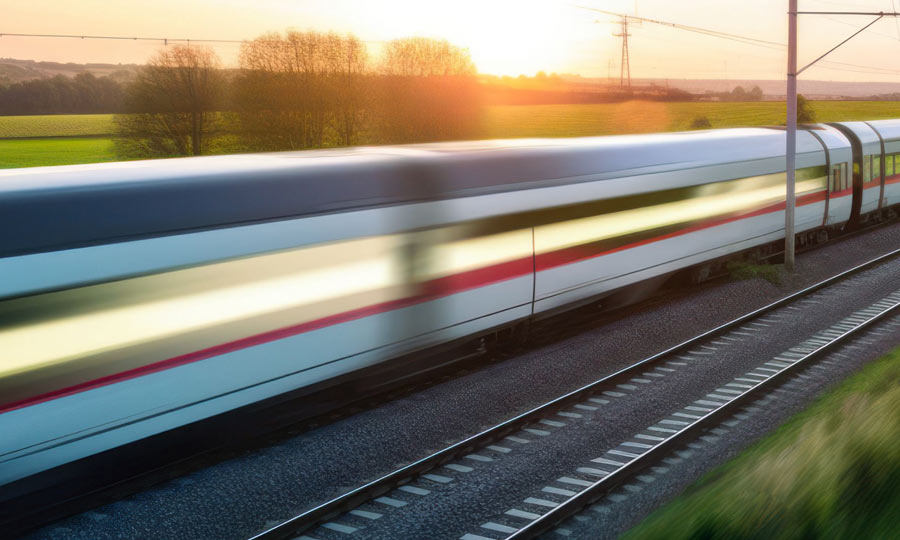
The Road to Decarbonization
The mobility and transportation industry is demanding that vehicle manufacturers and fleet operators develop new strategies, concepts and products for e-mobility. Knorr-Bremse supports its customers by acting as a system partner, offering safe and reliable systems with minimized emission of carbon dioxide, noise and brake dust. They align with the vehicle makers’ electrification road maps. As a result, Knorr-Bremse helps its customers to reduce their environmental footprint.
To provide the right conditions for the very best development, Knorr-Bremse has focused its mindset, business processes and product portfolio on e-mobility. In the eCUBATOR innovation unit eCUBATOR, for example, experts apply an overarching system-based approach to develop innovative and intelligent solutions for electric commercial vehicles. Sonja Wimmer, Chief Operations Owner E-Mobility, has the mission to shape the long-term future of e-mobility in the eCUBATOR: “In the eCUBATOR, we focus on innovative, efficient and scalable technologies that contribute to decarbonization in road freight and passenger transportation. We are not limiting ourselves to Knorr-Bremse’s current product portfolio, but are also looking at new growth areas.”
All Knorr-Bremse developments are based on the principle of the best fit: adaptable, modular and compact solutions that can be integrated into OEMs’ vehicle architectures flexibly and easily. With our “first-to-market” ambition, we already offer easily integrated, assembly-line-ready products for electric mobility. In this article, three experts from different Centers of Competence (CoCs) at Knorr-Bremse each discuss one of these Knorr-Bremse system solutions, which are sustainable and will be essential for the e-mobility transformation of commercial vehicles.
The eCUBATOR® Innovation Unit
In a reflection of Knorr-Bremse’s commitment to proactively shaping change, it has inaugurated the eCUBATOR®, an innovation unit for e-mobility. It sees up to 60 internal and external experts working at external sites in Munich and Budapest. Their mission is to use unconventional methods to identify innovative, intelligent solutions for electric commercial vehicles and develop them in close cooperation with customers, technology partners and start-ups.
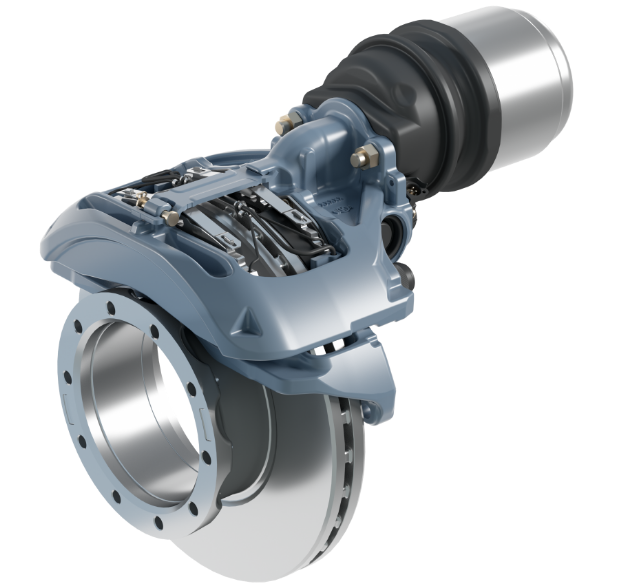
The Modular SYNACT® Family: Lowers Emissions and Energy Consumption
Knorr-Bremse develops innovative system solutions for safety-critical products. These solutions have always stood out for their superior function, efficiency, reliability and sustainability and added value for customers. This also applies to automated driving and e-mobility.
SYNACT® Disk Brakes: Achieving e-Mobility Progress with Modularity
“The modular concept behind the easily integrated and robust SYNACT® brake family makes an important contribution to the commercial vehicle industry’s rapid and economical transformation to e-mobility,” says Niklas Beckwermert, Product Manager for Air Disk Brakes at Knorr-Bremse. With electric trucks, designers have to deal with a vehicle architecture that is different to those powered by internal combustion engines, the expert says. “The motor does not take the place that the old combustion engine used to be in. In an e-truck, the motor is located closer to a wheel end system made up of an actuator, brake caliper, brake lining and disk. The solutions currently applied by vehicle makers frequently use integrated e-axles, where the motors and gear stages are integrated into the axle. Consequently, e-truck designers have to deal with completely new architectural requirements.” Modular SYNACT® disk brakes can flexibly meet the architectural requirements of e-mobility. “They meet these challenges by using things such as a design that is more compact axially or a radial cylinder arrangement,” says Niklas Beckwermert. “Knorr-Bremse provides vehicle designers with the freedom they need to create innovative e-drive concepts.” Other aspects of the modular SYNACT® approach include future solutions to minimize the emission of brake dust and noise and to electrify the brake system.
“The modular concept of our new SYNACT® brake family makes an important contribution to the commercial vehicle industry’s rapid and economic transformation to e-mobility.”Niklas Beckwermert,
Product Manager for Air Disk Brakes
Energy Efficiency Improves Range and the Environmental Footprint
“One key economic parameter in e-mobility is increasing a commercial vehicle’s range using the existing battery capacity,” Beckwermert says “SYNACT® helps add the necessary energy efficiency when driving by reducing energy consumption and vehicle weight. These reductions also lead to lower Scope 3 carbon emissions.” Another high-efficiency feature is the Active Caliper Release (ACR) system to reduce brake drag – regardless of the drive technology involved. The ACR concept uses a spring system to release the brake pad from the disk and more rapidly recenter the caliper. The result is lower energy consumption and less wear and tear on the brake pads.
SYNACT®: Brimming with EcoDesign
SYNACT® axial weighs four kilograms less than its predecessor model and SYNACT® radial 10 kilograms less. This reduced weight conserves material in the production process in addition to reducing energy use during driving. We work closely with our suppliers and other business partners to raise awareness of this important subject. In the process, we draw on the expertise we have gained from many projects. Our EcoDesign philosophy is also reflected in the robustness of the brakes and their ability to be remanufactured, extending the SYNACT® brakes’ life cycle.
How the Modular SYNACT® Family Contributes to Sustainable Mobility
- Improves energy efficiency: reduced weight and Active Caliper Release (ACR system)
- Lowers emissions: reduced Scope 3 carbon emissions as a result of resource conservation and energy savings; a toolbox for reducing noise emissions
- Realized with EcoDesign: reduced weight, robust, compatible with remanufacturing

E-compressors: Reduced Noise Emission Demanded and Delivered
Compressors produce compressed air, the main source of energy for all pneumatic brake systems, air suspensions and clutches used in commercial vehicles. The compressor technologies used with internal combustion engines and e-trucks differ significantly. Conventional piston compressors are powered by the internal combustion engine and the compressors of electric vehicles by the vehicle’s own electric motor. Wolfgang Kiener, the Product Manager responsible for compressors at Knorr-Bremse and thus the manager overseeing the Electrical Vane Module (EVM) and Electric Screw Module (ESM), vividly describes the technical interrelationships in the following interview. Both modules possess two qualities required for e-trucks: energy efficiency and quiet-as-a-whisper operations.
Combustion Engine or E-truck: How Do the Compressors Differ?
Wolfgang Kiener: Firstly, there are compressors that are powered by the internal combustion engine. They are mechanically coupled directly to the gear train on the internal combustion engine and operate when the engine is running. One exception is the compressor with a clutch, which is decoupled when the engine is idling. Piston compressors are used for this purpose, which produce a typical pumping sound, but this is drowned out by the running diesel engine. The major technological difference is that the e-truck compressors need to have their own motor. The reason is simple: There is no internal combustion engine to power them. Another difference is noise emission, for which there are heavy demands that we must meet. These demands led to the development of rotary compressors that operate very quietly.
How does the drive system of an e-compressor work?
Wolfgang Kiener: In an e-truck, a highly efficient off-engine compressor switches on when compressed air is needed. This saves energy. Energy-efficient auxiliary consumers like our compressors are exactly what helps customers to increase their vehicle range, an area that is critically important to all-electric vehicles.
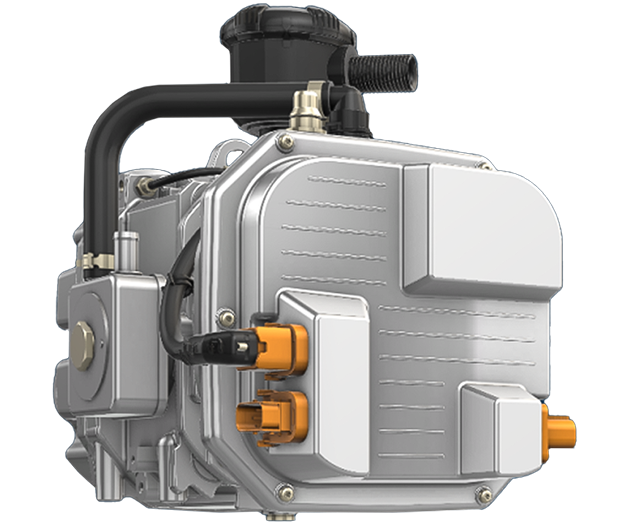
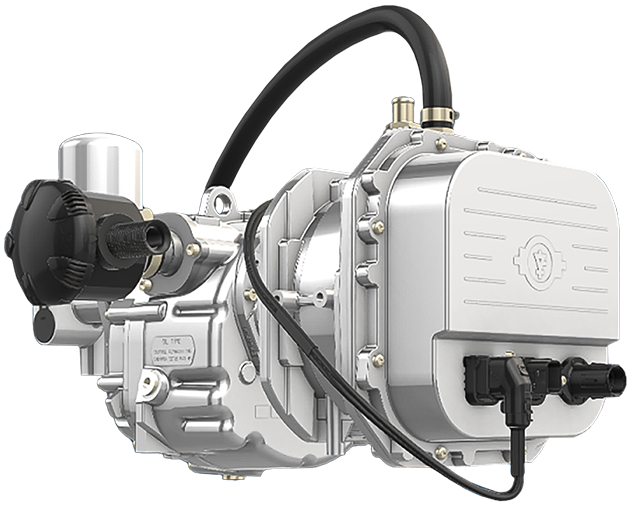
Is the e-compressor quieter?
Wolfgang Kiener: E-trucks are much quieter than diesel vehicles. For this reason, the compressors used in electric commercial vehicles must be quiet as a whisper in operation. A classic piston compressor with those typical pumping sounds would be one of the loudest components in an e-vehicle, and it would be unacceptable. We have applied the rotary compressor principles to achieve the necessary reductions in compressor noise emissions. The sound emissions have been reduced to a minimum and the compressor noise has been harmoniously integrated into the overall symphony of sounds in the vehicle.
Technology Profile: E-compressors (EVM and ESM) Made by Knorr-Bremse
The Electrical Vane Module (EVM) is going into series production in 2023. Screw compressors have already proven to be very reliable components during their decade of usage.
- The Electrical Vane Module consists of a rotary vane compressor in conjunction with a compact e-motor. The vane compressor is designed to be an energy-efficient and quiet compressor for electric commercial vehicles that require a medium to low amount of air (air consumption 180 to 300 NL/min; 330 NL/min to 11 bar). The vane compressors are able to operate so quietly thanks to their low-pulse compressed-air production and low vibration. They are designed to be compact and robust for use in a wide range of temperatures (–40°C to 80°C). They can also operate highly efficiently throughout the entire rpm spectrum. Another feature that contributes to the high level of efficiency is a permanent-magnet motor with an integrated inverter.
- The Electric Screw Module (ESM) (a screw compressor in conjunction with an e-motor) is efficient and extremely reliable. It performs impressively thanks to its low-noise operation in commercial vehicles requiring a lot of air, such as e-buses. The air consumption is 230 to 475 NL/min. The product characteristics are similar to those of the vane compressor.
How E-compressors Made by Knorr-Bremse Contribute to Sustainable Mobility
- Improves energy efficiency: reduced energy consumption through needs-based production of compressed air
- Lowers noise: quiet-as-a-whisper operations using the rotary compressor principle
“Compressors would be one of the loudest components in an e-truck. However, the e-compressors made by Knorr-Bremse keep noise emissions at a minimum. The compressor noise has been harmoniously integrated into the overall symphony of sounds in the vehicle.”Wolfgang Kiener,
Product Manager, EVM and ESM
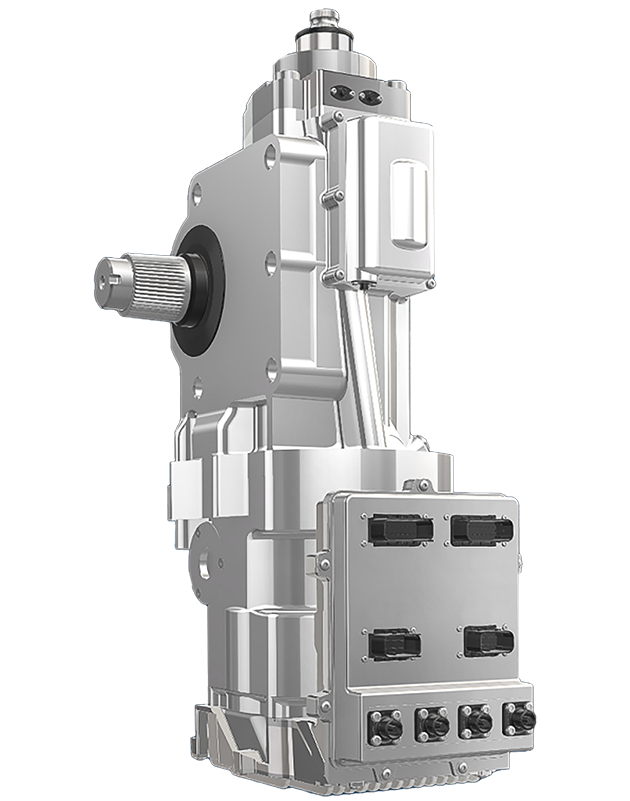
EPS – Safe, Energy-Saving Electric Power Steering for E-trucks
Knorr-Bremse’s electric power steering (EPS) is a fully redundant, fail-safe steering system. EPS, which is scheduled to enter series production in 2025, is a key technology for advanced driver assistance systems (ADAS), highly automated driving (HAD) and e-mobility. Thanks to its modular, system-based approach, EPS enables applications in all commercial vehicle classes and requires little integration expense. Using the power-on-demand principle, EPS is energy efficient and naturally meets the demanding safety standards of Knorr-Bremse. The coordinated steer-by-brake system also contributes to this, creating additional safety redundancy. Moreover, EPS assists with critical steering maneuvers in traffic, including evasive and µ-split maneuvers.
How does the steering system of a vehicle powered by an internal combustion engine and the one used in an e-truck differ? “The interplay of the steering system with an e-axle or with a conventional setup is quite similar. However, the technological functionality of electric power steering is completely different,” says Nils Bielefeld, head of the EPS Center of Competence (CoC). “The pump for the steering system in an e-truck cannot be powered by an internal combustion engine. The power must be provided all electrically. During operation, this leads to greater energy supply for short periods.” Doesn’t greater energy usage reduce the vehicle’s range? “No,” Bielefeld says, “EPS is a power-on-demand system, and that means the system uses energy only when it is required.” The expert also pointed to the changed balances of power for steering an e-truck: “The front-axle load increases significantly in all-electric vehicles due to the battery. For this reason, the steering system needs to expend more power to perform the steering maneuver.” However, energy-efficient steering is ensured with EPS because it is a power-on-demand system – and lower carbon emissions are ensured as well.
“Power on demand means that the EPS does not consume any power when a vehicle is driving straight ahead. This ‘idle mode’ applies to a large amount of the routes to be driven, particularly for trips made by long-haul trucks.”Nils Bielefeld,
Head of the EPS Center of Competence
Nils Bielefeld, the steering system specialist, explains why a power-on-demand system is the key to energy-efficient steering: “Power on demand means that EPS does not consume any power when the vehicle is driving straight ahead. This is called the ‘idle mode’ and it applies to a large amount of the routes to be driven, particularly for trips made by long-haul trucks.” EPS therefore uses the most power when the steering wheel is turned and the vehicle is stopped or during maneuvers at low speed with high torque steer.”
EcoDesign Keeps the Aftermarket in Mind
The EPS also incorporates EcoDesign and therefore the needs of the aftermarket. Subcomponents in handling and technology can be exchanged easier and potential premature scrapping of a component can be prevented. The process by its very nature requires components to be recyclable.
How Knorr‑Bremse EPS Improves the Environmental Footprint
- Improves energy efficiency: greater range through a power-on-demand system
- Lowers emissions: lower carbon emissions through a power-on-demand system
- Recyclable: recyclability is incorporated into EcoDesign
